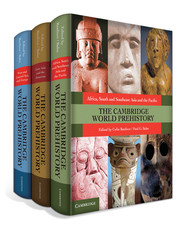Book contents
1.3 - Introduction: Languages
from I. - Introduction
Published online by Cambridge University Press: 05 August 2014
Summary
How Language Can Inform Prehistory
From the Tower of Babel to the tales of the Aboriginal Dreamtime, we have long sought to account for our baffling diversity of tongues. Today, however, prehistorians can look to our linguistic diversity not just as an enigma to be resolved, but as in fact a rich source of data on our origins. Or at least potentially so, for it remains a challenge to work out quite how we are to interpret the linguistic record of our past.
The science of linguistics first began out of this desire to make sense of our linguistic diversity, and has taken great strides over the last two centuries. Even so, the nature of language, and how it changes through time, still frustrate us. It does not even allow, for instance, a straightforward answer to what may seem the simplest question: exactly how many different languages does humanity speak? Typical estimates range around six to seven thousand spoken today, usually with reference to the Ethnologue classification (Lewis 2013), but in truth such figures mask considerable inconsistency and imprecision. The very question is in fact somewhat simplistic, akin to asking an archaeologist to count how many human “cultures” there are, or a geneticist how many “populations”. The definition of a discrete language, as opposed to a dialect, or language family, is as a matter of principle by no means always clear-cut. Across much of the globe, counting languages relies on arbitrary lines drawn through what in reality are “dialect continua”: across much of China, India, the native Americas, Arabic- and Bantu-speaking countries, even Scandinavia. But by whatever measure, our linguistic diversity is vanishing at an alarming rate. Almost every week, one of our varieties of human language goes extinct.
- Type
- Chapter
- Information
- The Cambridge World Prehistory , pp. 19 - 44Publisher: Cambridge University PressPrint publication year: 2014
References
- 4
- Cited by

